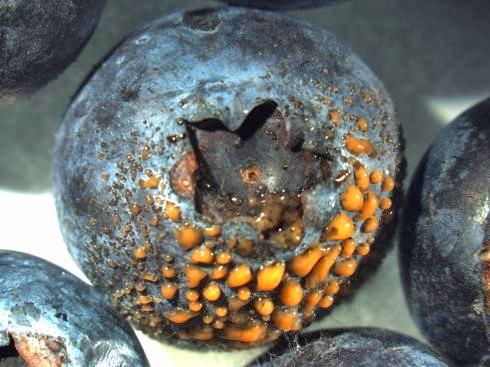By Clint Thompson
Disease management is crucial to blueberry growers producing a viable crop. But producers need to know what diseases are problematic in their fields.

Credit: M. Velez-Climent
“Scouting is critical to know what diseases you have and also to know what diseases you’ve had in the past. That’s often a good predictor of what you’re going to have in the future. It’s really going to depend on your site, the experience you’ve had with your site, weather and things like that,” said Jonathan Oliver, University of Georgia (UGA) assistant professor and small fruits pathologist.
Farmers are encouraged to be proactive instead of reactive when managing fruit rot diseases, which usually occur this time of year, during periods from bloom until after pre-harvest.
“Some things you’ve got to wait and see and spray afterward. But as far as preventative sprays, especially the sprays around bloom for fruit rots that remain latent until harvest, you really can’t wait on those because you don’t know if you’re having problems with fruit rots,” Oliver said. “For fruit rots for sure, it’s better to be proactive. If you wait until right before harvest when you start to notice problems with fruit rots, it’s definitely way too late to control the diseases at that point.
“We have a little bit of the ability to predict anthracnose now, at least in some locations in South Georgia through this new model that we’re looking at this year. But other than that, there’s no real good way, other than saying, ‘It’s wet, so we’re probably having those issues to spray after the fact.’ It’s really preventative sprays at that point to protect from fruit rots.”









